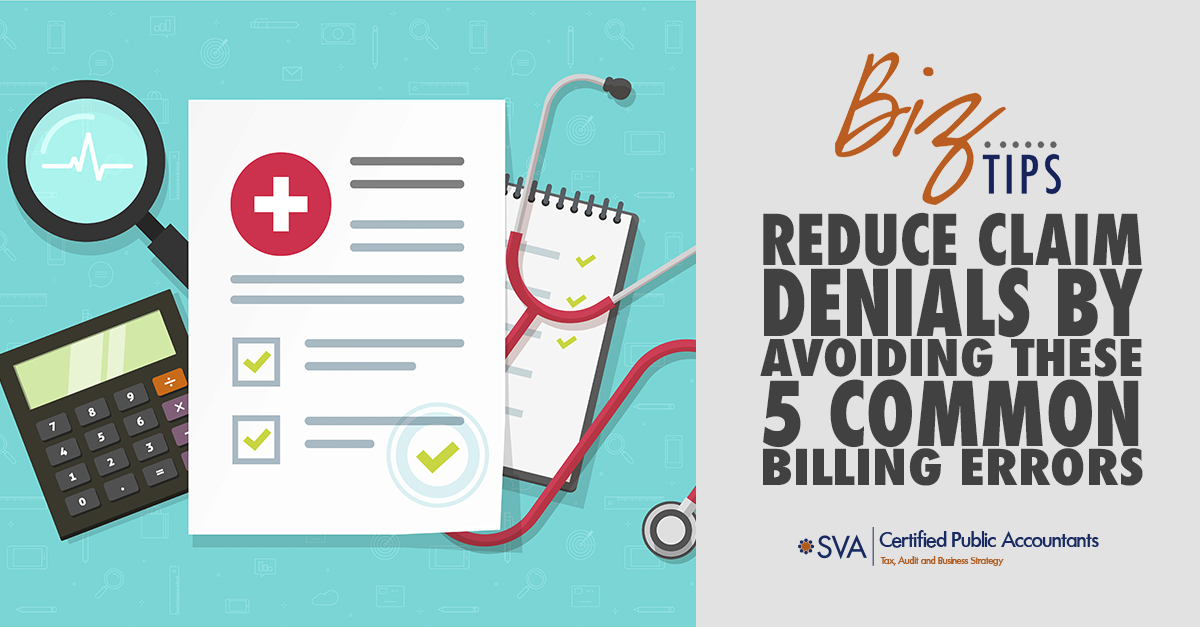How to Avoid Mistakes When Submitting Your Claim is a crucial topic, especially when navigating the often complex world of insurance claims. Understanding the process, ensuring accuracy, and gathering the right documentation are essential steps in ensuring a smooth and successful claim resolution.
This guide will walk you through the essential elements of submitting a claim, from understanding the different types of claims to providing the necessary evidence. By following these steps, you can significantly increase your chances of having your claim approved quickly and efficiently.
Contents List
Understanding Your Claim
Submitting a claim can be a complex process, but understanding the basics can help you avoid common mistakes. The first step is to clearly define the scope of your claim and gather all the necessary documentation. This will help ensure that your claim is complete and accurate, increasing the likelihood of a successful outcome.
Types of Claims
Claims can vary widely depending on the situation. Here are some common types:
- Insurance Claims:These involve seeking compensation from an insurance company for losses covered by your policy, such as damage to property or medical expenses.
- Tax Claims:These involve requesting a refund or adjustment to your taxes, such as claiming a deduction or credit.
- Legal Claims:These involve seeking compensation or relief from a court of law for a wrong or injury, such as a personal injury claim or a breach of contract claim.
Common Mistakes When Defining the Scope of a Claim
Many mistakes can be made when defining the scope of a claim. Here are some common examples:
- Failing to identify all relevant losses:When filing an insurance claim, for example, make sure you include all the expenses related to the incident, such as lost wages or additional living expenses.
- Overstating the value of losses:Providing inflated figures for your losses can damage your credibility and potentially lead to a claim denial.
- Not understanding the coverage limits:Ensure you are familiar with the terms and conditions of your policy or legal agreement to avoid claiming for losses that are not covered.
Gathering Relevant Documentation and Evidence
Before submitting a claim, it is crucial to gather all relevant documentation and evidence. This includes:
- Policy documents:For insurance claims, ensure you have a copy of your policy and any relevant endorsements.
- Receipts and invoices:These documents provide proof of expenses incurred as a result of the incident.
- Medical records:For medical claims, provide detailed medical records documenting your injuries or treatment.
- Photographs and videos:Visual documentation can be helpful in supporting your claim, especially for property damage claims.
- Witness statements:If applicable, gather statements from any witnesses to the incident.
Completing the Claim Form Accurately
The claim form is the foundation of your claim, so it is essential to complete it accurately and thoroughly. Failing to do so can lead to delays, denials, or even the dismissal of your claim.
Checklist for Essential Information
Here is a checklist of essential information to include on the claim form:
- Your contact information:This includes your name, address, phone number, and email address.
- Claim details:Clearly describe the incident, including the date, time, and location.
- Policy information:If applicable, provide your policy number and the name of the insurance company.
- Loss details:Describe the nature of your loss, including the extent of damage or injury.
- Supporting documentation:Indicate the type of documentation you are providing, such as receipts, medical records, or photographs.
Potential Pitfalls
Here are some common pitfalls to avoid when filling out the claim form:
- Missing deadlines:Pay close attention to any deadlines for submitting your claim form. Late submissions can result in the rejection of your claim.
- Providing inaccurate information:Ensure all the information you provide is accurate and truthful. Providing false information can lead to the denial of your claim and potential legal consequences.
- Leaving sections blank:Complete all sections of the claim form, even if you think some information is not relevant. Leaving sections blank can raise questions and delay the processing of your claim.
Claim Form Sections and Requirements, How to Avoid Mistakes When Submitting Your Claim
| Claim Form Section | Requirements |
|---|---|
| Personal Information | Name, address, phone number, email address |
| Claim Details | Date, time, and location of the incident |
| Policy Information | Policy number, insurance company name |
| Loss Details | Description of the damage or injury |
| Supporting Documentation | List of all supporting documents submitted |
Supporting Your Claim with Evidence: How To Avoid Mistakes When Submitting Your Claim
Evidence is crucial to support your claim and demonstrate the validity of your request. It provides concrete proof of your losses and strengthens your case.
Types of Evidence
The types of evidence required for different claim types vary. Here are some common examples:
- Insurance Claims:Receipts, invoices, repair estimates, medical records, photographs, and witness statements.
- Tax Claims:W-2 forms, 1099 forms, receipts for charitable donations, medical expenses, and educational expenses.
- Legal Claims:Medical records, police reports, witness statements, contracts, and expert reports.
Examples of Strong Evidence
Strong evidence is detailed, accurate, and relevant to your claim. Here are some examples:
- Original receipts:These provide concrete proof of expenses incurred.
- Medical records:Detailed medical records from a qualified healthcare professional document your injuries or treatment.
- Photographs and videos:Visual documentation can effectively demonstrate the extent of damage or injury.
- Witness statements:Statements from impartial witnesses can corroborate your account of the incident.
Organizing and Presenting Evidence
Organize your evidence in a clear and concise manner. This makes it easier for the claim reviewer to understand and process your request. Consider using:
- Folders or binders:Group similar documents together for easy reference.
- Table of contents:Include a table of contents to provide an overview of the evidence submitted.
- Numbering and labeling:Number and label each document for easy identification.
Proofreading and Reviewing
Before submitting your claim, it is essential to thoroughly proofread the claim form and supporting documents. This ensures that all information is accurate and complete, minimizing the risk of errors or omissions.
Tips for Proofreading
Here are some tips for proofreading your claim:
- Read carefully:Read the claim form and supporting documents carefully, paying attention to every detail.
- Check for typos:Ensure that there are no spelling errors or grammatical mistakes.
- Verify all information:Double-check all dates, numbers, and addresses for accuracy.
- Review for completeness:Ensure that all required sections are completed and that you have included all relevant supporting documentation.
Importance of Double-Checking
Double-checking your claim form and supporting documents is crucial. It helps to catch any errors or omissions that could delay or even prevent the processing of your claim.
Remember to click Submitting Your Claim for the Capital One Settlement to understand more comprehensive aspects of the Submitting Your Claim for the Capital One Settlement topic.
Common Errors to Look For

| Error Type | Description |
|---|---|
| Typos and spelling errors | Check for any misspellings or grammatical errors. |
| Inaccurate dates or numbers | Verify that all dates and numbers are correct. |
| Missing information | Ensure that all required sections are completed. |
| Incomplete documentation | Make sure you have included all relevant supporting documents. |
Submitting Your Claim
Once you have completed and reviewed your claim, you can submit it to the appropriate party. This involves following the correct procedures and ensuring that your claim is received and processed promptly.
Step-by-Step Guide
Here is a step-by-step guide on how to submit your claim:
- Gather all required documents:Ensure you have all the necessary documents, including the completed claim form and supporting evidence.
- Choose the submission method:Determine the preferred method of submission, whether it is online, by mail, or in person. Refer to the instructions provided by the claim recipient.
- Submit your claim:Follow the instructions for submitting your claim using the chosen method. If submitting online, ensure you have a secure internet connection.
- Keep a record of your submission:Save a copy of your completed claim form and any confirmation emails or tracking numbers for your records.
Importance of Keeping a Record
Keeping a record of your claim submission is crucial. It provides proof that you submitted your claim and can be helpful in tracking its progress or resolving any issues that may arise.
Ensuring Claim Receipt
To ensure your claim is received by the appropriate party, consider the following:
- Double-check the address:Verify the address for submitting your claim and ensure you have the correct recipient.
- Use certified mail:For important claims, consider using certified mail with a return receipt to provide proof of delivery.
- Follow up:If you have not received confirmation of your claim within a reasonable timeframe, follow up with the claim recipient to ensure it was received.
Final Wrap-Up
Submitting a claim can feel daunting, but it doesn’t have to be. By carefully preparing your claim, ensuring accuracy, and following the Artikeld steps, you can navigate the process with confidence. Remember, taking the time to understand the requirements and providing the necessary documentation can make all the difference in a successful claim resolution.
Query Resolution
What happens if I miss a deadline on my claim form?
Missing deadlines can jeopardize your claim. Contact the insurance company immediately to explain the situation and see if an extension is possible.
Can I submit my claim online?
Many insurance companies offer online claim submission options. Check with your insurer for available methods.
What if I don’t have all the required documentation?
Contact your insurance company to discuss options. They may be able to assist you in obtaining missing documentation.










